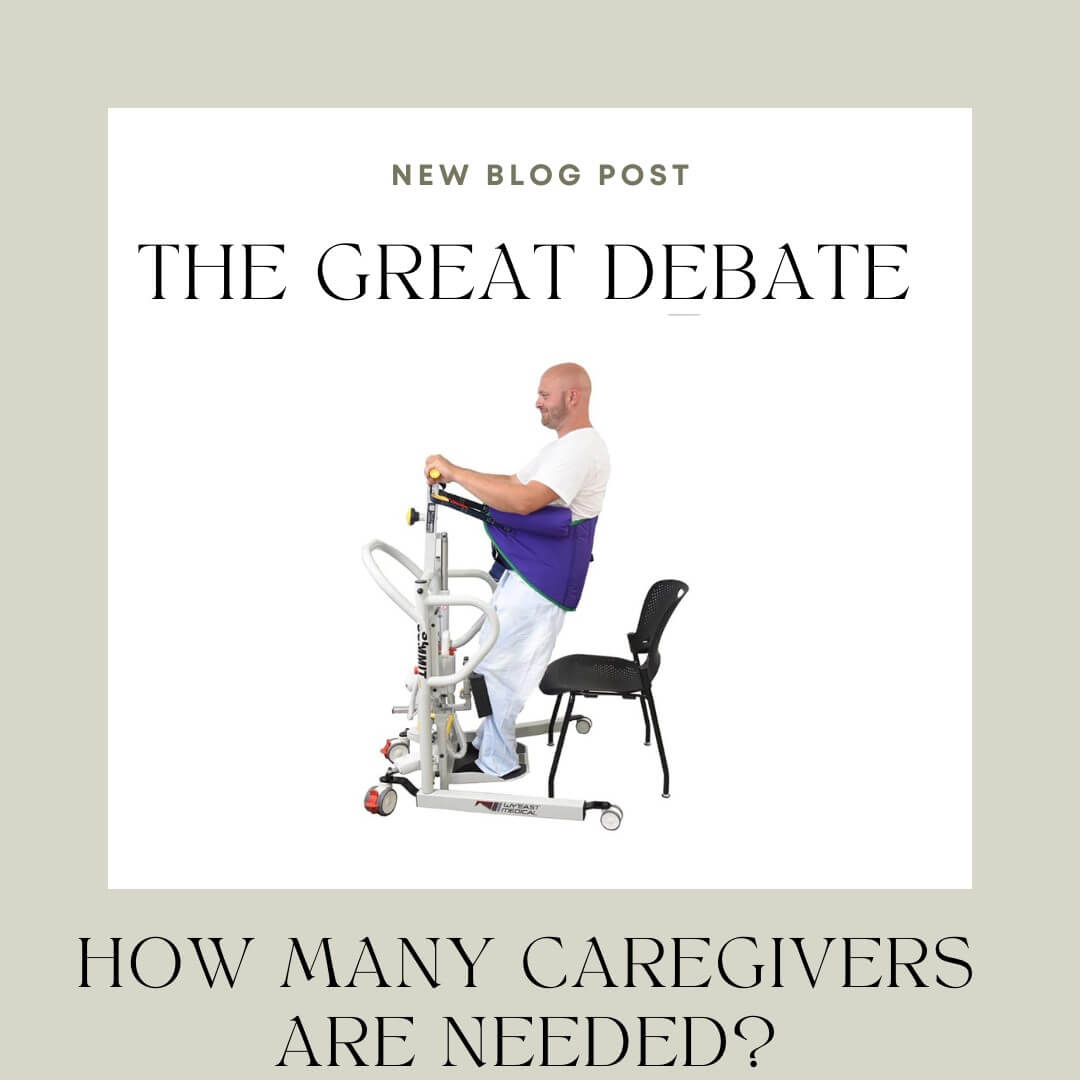There is no debate about the amazing benefits of incorporating a mechanical sit-to-stand into your Safe Patient Handling and Mobility (SPHM) toolkit. Hello, It’s Amy and Amber, we are both former SPHM coordinators from large acute care organizations, SPHM equipment vendor experts and passionate professionals who promote the power of mobility and value of safety. When it comes to mechanical sit to stands, Amy says, “it’s a no-brainer, often a ceiling lift or mobile dependent lift is too much; the patient needs some assistance, but we also want to promote as much participation as possible”. Amber agrees, “The mechanical sit to stand offers weight bearing on the long bones preventing decalcification that can lead to osteoporosis and challenges the patient’s cardiovascular system improving hemodynamic stability”. Both Amber and Amy considered the sit-to-stand a core piece of equipment for almost every patient care unit and found caregivers very receptive to using it. Especially since it only required one caregiver to operate, unlike to mobile dependent lift- which requires two caregivers. However, even as this was IS a point that Amy and Amber easily agree on, it is not such a common understanding in the industry.
Amber currently teaches SPHM classes at the local community college to nursing and allied health students. Amy is the VP of Clinical Safety at Inovi Healthcare consulting with healthcare facilities across the U.S. Recently the two realized, while working across the country from each other, they both encountered the same common misconception- that two caregivers are required when using a mechanical sit-to-stand. When comparing notes, while the acute care settings have adopted the general consensus among manufacturers and professional SPHM organizations- that a single caregiver can safely operate the sit-to-stand when using it with an appropriate patient, in contrast, sub-acute settings seem to adopt the “2 caregivers for all mobile lifts” philosophy. Why does this matter, you may be asking yourself? Amy states “One of the greatest benefits to the sit-to-stand is that a single caregiver can work autonomously to move and mobilize their patients- it creates a more efficient task completion while keeping the caregiver safe”. Amber responds similarly, “By requiring two caregivers you are discouraging use, the caregiver may believe that it is too much work to get the equipment AND another caregiver, often resulting in unsafe manual lifting”.
So why is this misconception continuing to create barriers. As Amy and Amber dug deeper, they came to the same conclusion. While most manufacturers guidelines do promote the practice of a single caregiver safely using a sit to stand, it is the policies at the facilities dictating the rule. As the experts reflect on their own policies, they agree that it was defined in their acute care organizations SPHM policy – allowing a single caregiver for ceiling lift and mechanical sit-to-stand use.
As patient handling related injuries continue to increase in the sub-acute setting and in tandem a caregiver shortage is burdening this level of care: we need to do more to provide safe, efficient, and meaningful policies around SPHM. Challenge the status quo – consider revisiting the intention of the policy, its current relevance and alignment with manufacturers guidelines. Increasing the use of the mechanical sit-to-stand in the sub-acute care setting has potential to decrease patient handling injuries for staff, improve efficiency in patient mobility related tasks, offer mobility-related benefits to the caregiver, and reduce risks of falls and injuries to the patients related to unsafe manual handling.
*Interested in sit-to-stand universal slings? Inovi offers options in both washable and disposable slings. If you would like some advice on the best sling style for your sit-to-stand, Amy Villars offers free consultation and advice, visit our Safe Patient Handling page here https://inovihealth.com for more information.

